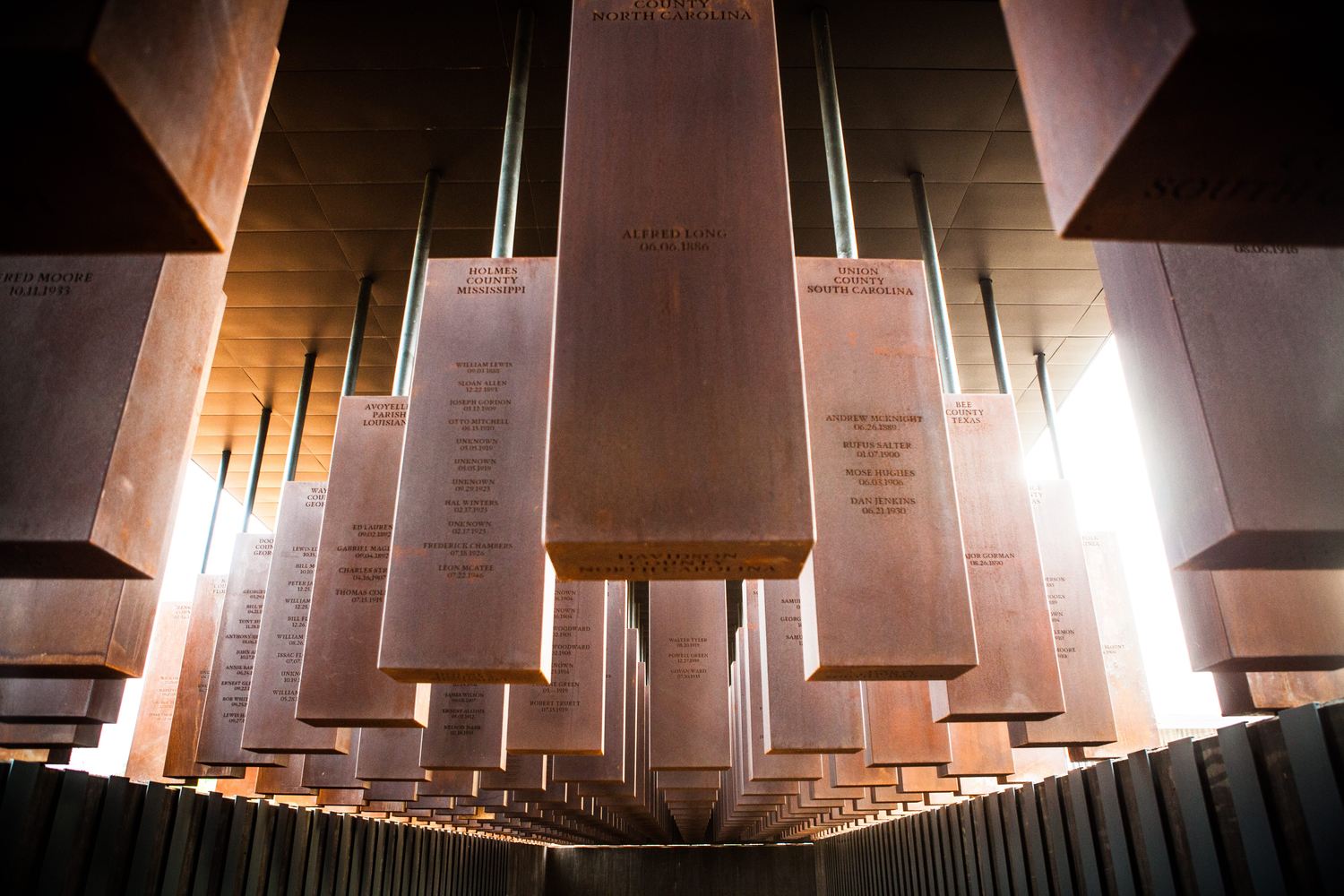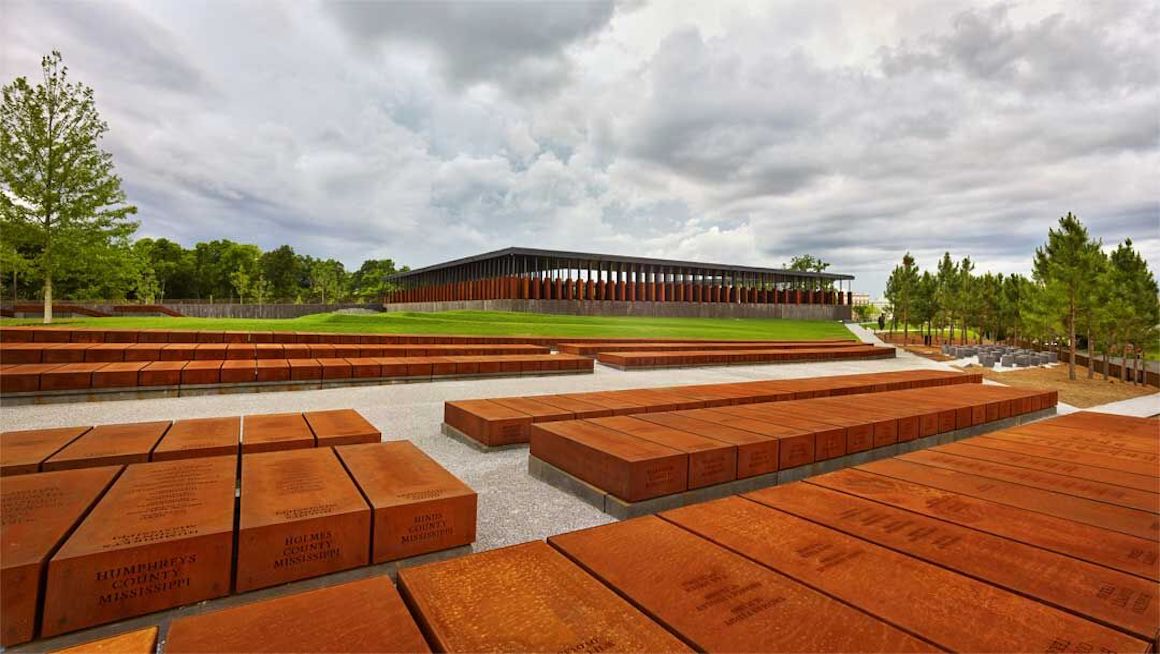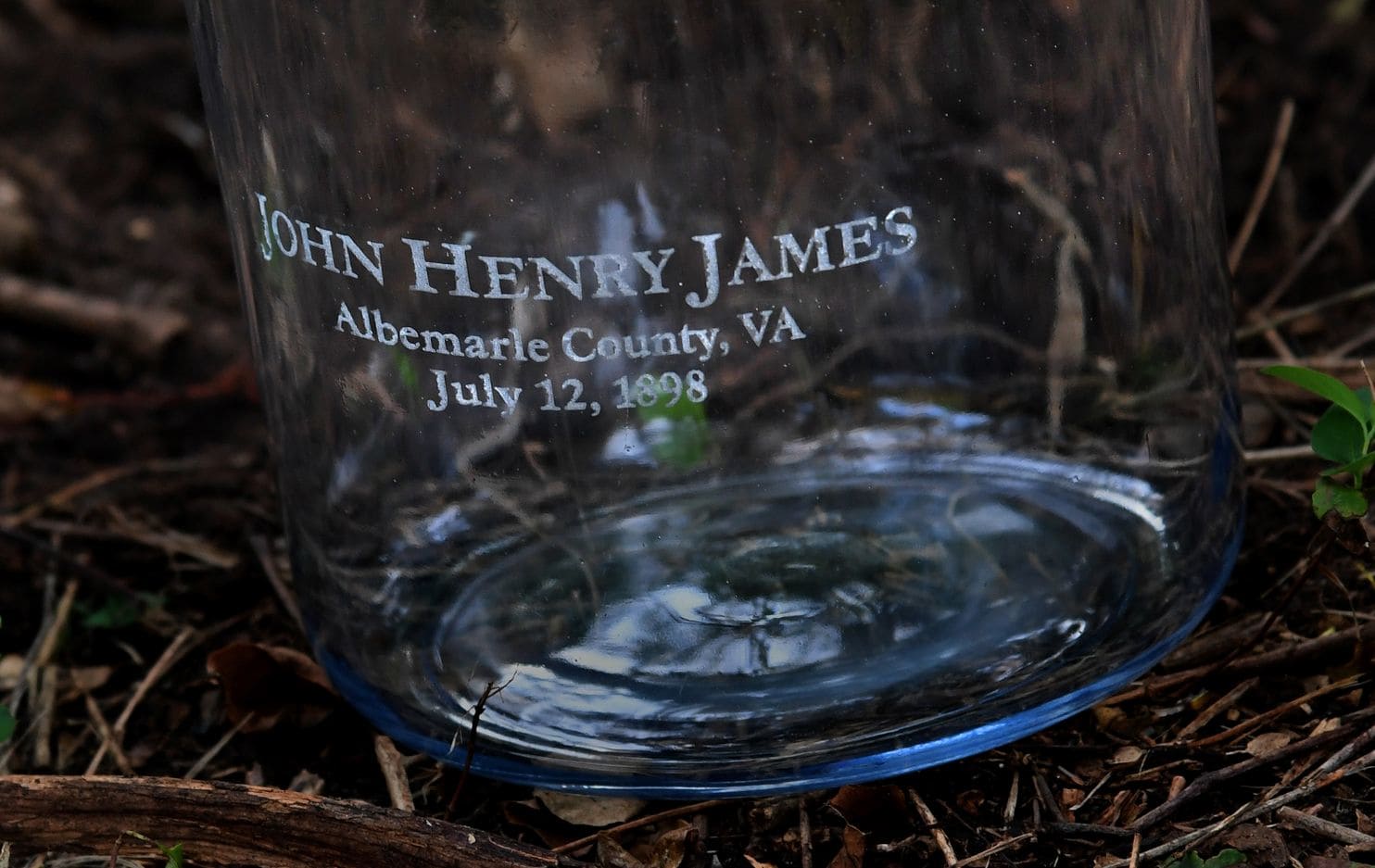The National Memorial for Peace and Justice opened on April 26, 2018, in Montgomery, Alabama, and is America’s first memorial honoring the “legacy of enslaved black people, people terrorized by lynching, African Americans humiliated by racial segregation and Jim Crow, and people of color burdened with contemporary presumptions of guilt and police violence.”[1] The monument directly represents the murders of over 4,400 people who were targeted by racial terror lynchings. The memorial was developed by the national non-profit, Equal Justice Initiative (EJI), who has been a pivotal leader in developing research and language surrounding the history of violence against Black Americans. While the memorial itself is innovative in many ways, the drive to involve communities directly in reconciliation is a driving force through the Monument Placement Initiative program.
EJI’s dedication to updating the way this violence is talked about is exemplified by their use of “racial terror lynching”, instead of simply identifying “lynching” as a singular act. By including the descriptors of “racial”, it draws attention to the key identifier that drove the violence: race. The inclusion the word “terror” speaks to lynching as not only a singular event of terrorism, but brings forward the larger idea that “terror” was an environment that was inescapable for the Black community.
The memorial is located on a hill, overlooking the city of Montgomery. A visitor enters the memorial by following a winding path that is guided by sculptures and historical writings, situating the history of racial terror lynchings within the context of enslavement, the Transatlantic slave trade, and the Great Migration. This path leads directly to a large, built structure that is peppered consistently with pillar-like rusted steel, rectangular boxes. They are equal in size and the shape of a simple coffin.
The space itself is square, and guided by four open-air corridors, with a “Memorial Square”, located in the middle and unroofed to the natural environment. This first section of the space does not have walls, and the columns rest on the floor, practically at eye level, inviting the viewer to walk up to them and view all of the information clearly. The breeze from outside blows between the columns as one walks through them. Each metal box includes the same information: the county and state at the top, and then a list of the names of those that had been murdered, and the date of their death. Some names are listed as “unknown.” The memorial is made of 805 of these rusted boxes.
As you turn right to head into the second section of the space, the floor becomes a ramp that slants downward, but the rectangular boxes maintain their same height. As you walk down the ramp, the county monuments come off of the ground. The information on them becomes harder to read as you follow the path down, simulating the way in which space from the details of these horrors allows us to forget the names of those that were killed. By the end of the ramp, the columns are hanging above from a mounted steel pole. The third and fourth sections of the square is enclosed and underground, with the columns hanging overhead. In this area, the bottom of the columns are marked with the name of the county. This space is activated by two components: lists of supposed reasons why people were lynched, and a memorial space beneath the floating pillars. Stairs lead the visitor outside from this section.

Heading out of the main building, there are stacks of duplicated metal columns: the twin of the each column lays solemnly outdoors, extending the memorial space further. The stacks of these metal boxes, now displayed horizontally like stacks of coffins, take a different shape. They are stacked separately by state. EJI asks that these 805 counties step up and be accountable for this troubling history in their locale by taking the column of their county and displaying it, as part of their Monument Placement Initiative. As EJI prominently states, “Public commemoration plays a significant role in prompting community-wide reconciliation.”[2]When a county makes room, both geographically and conceptually for this monument, it is a first step towards healing historical wounds.
https://www.youtube.com/watch?v=k7uSm2-Xaig
The memorial will begin distributing the columns to counties in 2019, and some counties have already begun to make plans to receive, display, and honor theirs. The process begins with a formal request of interest from a diverse community group of over five members, who may or may not be affiliated with a local non-profit. In preparation for receiving the memorial in 2019 and beyond, EJI suggests their Community Remembrance Project as a place to get started. This project asks that communities work to place a historical marker and do a soil collection of the location of the lynching. As of this writing, eight counties have placed historical markers, five of which are in Alabama. Austin, Texas, is the largest city included in that list. Montgomery County in Alabama is already in the works of accepting and preparing to place their monument, leading as an example for other counties that are grappling with their own troubling histories. While the location has not yet been confirmed, there is a request for a very visible, public space to showcase the steel box.
Other counties are working together to lay the foundation necessary to accept their county column after the process begins. Albemarle County in Virginia is making room for those conversations in light of the recent violence in the city of Charlottesville. In March 2018, even before the memorial opened, Charlottesville began work on a partnership with EJI to appropriately memorialize their history in the murder of John Henry James, who was lynched on July 12, 1898 for allegedly assaulting a white woman. Charlottesville hosted a community discussion, and even put forth a resolution that July 12, 2018 be “John Henry James Day” in his honor.
The National Memorial for Peace and Justice was created to be a dynamic response to reconciliation in the United States. This memorial allows for dialogue instead of creating a static response to historical trauma. There are few, if any, memorials that work to engage communities in the contemporary moment, as a way of healing from past violence. Creating a space for conversation regarding the violence done to Black Americans is a vital way to reckon with our past, present, and future. By memorializing the trauma of racial terror lynching at the national and local county level, communities can begin to explore what it means to be accountable in healing the pain that has been caused by this horrific part of American history.
[1]https://museumandmemorial.eji.org/memorial
[2]https://eji.org/national-lynching-memorial



